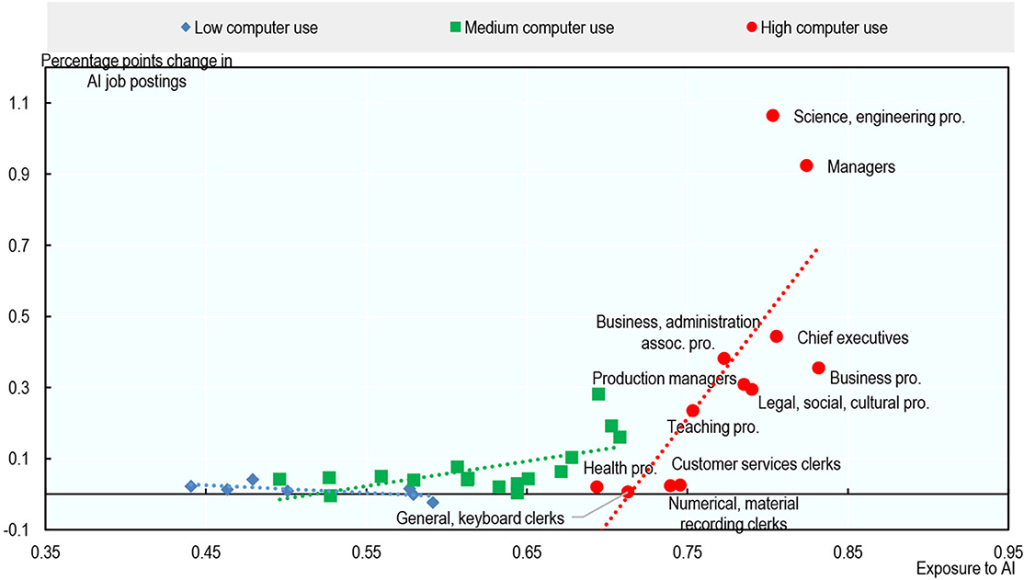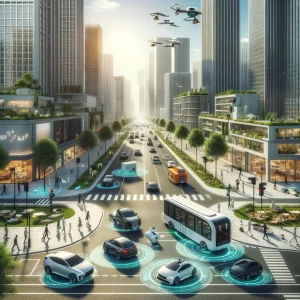Artificial intelligence (AI) is one of the most transformative technologies of our time. It has the potential to improve various aspects of human life, such as health, education, entertainment, and security. However, AI also raises some concerns, especially regarding its impact on the labor market. Many people fear that AI will replace human workers and cause mass unemployment.
This appears to be a relatively new concern, but is it? Technological unemployment has been discussed since Aristotle’s time. From the invention of the steam engine, which sparked fears of obsolescence, to the digital revolution, where computers were anticipated to dominate all sectors, historical precedent suggests a recurring theme. Did these revolutions result in widespread unemployment? No, while certain industries experienced significant shifts and job displacements, new opportunities and industries emerged, ultimately leading to overall economic growth and societal advancement.
While history doesn’t always repeat itself, and AI might bring its own set of challenges, similar uncertainties surrounded previous technological revolutions as well. We argue that there’s no reason to believe AI will result in widespread unemployment and instead, our focus should be on addressing AI’s potential to worsen inequality within the labor market.
Augmentation
At its core, AI is a technology designed to mimic human intelligence by analyzing data, recognizing patterns, and making decisions. Unlike humans, AI systems can process vast amounts of information at incredible speeds, enabling them to perform tasks with unparalleled accuracy and efficiency. However, despite their impressive capabilities, AI systems still lack the nuanced understanding and creative problem-solving skills that humans possess. This is where rather than replacing human workers, AI is used to complement and enhance human capabilities. AI matches or even outperforms doctors in some cases, yet it is not making them unemployed. Instead, it is utilized to complement doctors’ work, enhancing efficiency and minimizing errors. AI can help doctors in diagnosing and treating diseases, but it cannot replace the human decision making, care and trust that doctors build with their patients.
Creation
It’s essential to remember that AI can also play a significant role in job creation. While there’s often concern about the impact of AI on traditional roles, history has shown that technological advancements lead to the emergence of new job opportunities.
Before the invention of computers, who would have foreseen the job of computer programmer? AI-powered technologies have the potential to revolutionize entire industries, leading to the creation of entirely new markets and job sectors. For example, the rise of autonomous vehicles has sparked the emergence of new roles in the transportation industry, such as autonomous vehicle technicians, fleet managers, and transportation planners specializing in autonomous vehicle infrastructure.
Taking a broader look at unemployment trends and the influence of AI, in a study investigating Artificial Intelligence and Employment, researchers explored the relationship between AI adoption and overall employment change. The study did not establish a clear correlation between AI exposure and a decrease in total employment. Instead, it revealed that AI is linked to increased employment growth in occupations with high computer usage (Figure 1).

Transformation
Let’s consider a scenario in the food industry where AI replaces a significant number of workers due to its cost-effectiveness in performing tasks. Consequently, the production cost of food decreases, potentially leading to a drop in food prices. As a result, individuals may allocate a smaller portion of their income towards purchasing food, freeing up funds for spending on other goods and services. This surge in consumer demand in other sectors subsequently drives up the need for labor. It’s important to recognize that technological innovation doesn’t necessarily eliminate jobs but rather transforms the landscape of employment opportunities within the economy.
With increased labor productivity, consumers can access a wider array of goods and services, contributing to economic growth and development, provided that the benefits of increased productivity are passed on to consumers. However, if the benefits of increased labor productivity do not end up benefiting the consumer but instead remain concentrated among a select few, the potential for economic growth and development may be hindered.
AI’s impact on jobs is about transformation, some jobs may become obsolete but new job opportunities will also be created (Report WEforum). So should workers simply be prepared to acquire new skills? This question has resonated throughout history. As far back as 1786, woolworkers grappled with a similar dilemma. Who will support our families while we embark on the daunting journey of learning a new trade? And what if this newfound trade becomes obsolete due to further technological progress? These are genuine issues that must be addressed, but it’s crucial to distinguish them from the narrative that AI inevitably leads to widespread unemployment. It emphasizes the importance of implementing measures to facilitate a smooth transition for workers and ensure that the benefits of AI are equitably distributed. By focusing on creating supportive environments, offering robust education programs, and establishing effective social safety nets, societies can harness the positive aspects of AI while minimizing its potential negative impacts on employment. The key challenge is not unemployment itself but managing this transition effectively.
Conclusion
While it’s undeniable that AI technologies are rapidly advancing and are expected to have dramatic effects on the economy, it’s important to discuss AI’s impact with caution. Portraying AI solely as a positive or negative force, for instance, by implying it will inevitably lead to unemployment, oversimplifies a complex reality.

The predictions of AI causing massive job losses, faster growth in productivity and GDP are at odds with reality so far: if anything, unemployment in many advanced economies is at historical lows (Figure 2). Historical precedent illustrates that concerns about rising unemployment stemming from technological innovation are frequently unfounded.
Instead, economies have adapted and evolved, creating new job opportunities and driving overall growth.
However, it’s crucial to recognize that these transformations are not without their challenges, as highlighted by the rising income inequality, exacerbated by technologies such as AI.


